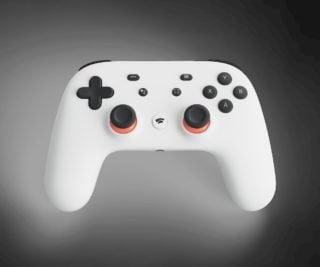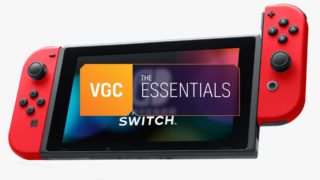Google Stadia presents many ideas, but few answers
First demo leaves us questioning lag, bandwidth and pricing

The industry is always on the cusp of change. From the birth of 3D graphics to virtual reality, video games have always had something new waiting around the corner. At GDC 2019, Google unveiled their idea of the future, video game streaming through a service it calls Stadia.
“The future of gaming is not a box,” proclaims Google’s website. The software services giant believes that it can reach more customers by allowing consumers to stream games to any screen at its disposal, and at first glance, the idea makes sense. Computers and game consoles can cost hundreds of dollars up front, which can make justifying a purchase difficult for the average consumer. By keeping sessions on Google’s hardware, users can seamlessly move from playing on their phone to their television to their computer.

Google also sees Stadia as a way to blend playing and spectating, offering features like instant, high-quality streaming to YouTube, allowing watchers to queue up to join a streamer’s session, and even using Google’s built-in assistant to quickly look up tips on how to play.
While Google was happy to share its ideas for what Stadia could be, many questions remain unanswered. The pricing model, for a start, is still under wraps. Stadia might provide a subscription fee similar to Sony’s PlayStation Now or support individual game purchases like Nvidia’s GeForce Now, but those details will be announced at a later date.
At GDC, Stadia’s marketing made bold proclamations, like “connecting players in new ways,” but the only hands on we were able to experience were single-player games, like Ubisoft’s Assassin’s Creed Odyssey and id Software’s Doom. Video quality itself seemed acceptable, though not as crisp as playing a game on local hardware.
Input latency did, however, appear to be a work in progress, even in the controlled setting of Google’s GDC booth (although it claimed the demos were emulating “real networking conditions”). During one demo, a journalist reported that they noticed lag, much to the surprise of Google’s employees.
In truth, Stadia as we saw it at GDC is not the Stadia as it will be in the real world. While Google has attempted to emulate the experience of real-world latency, wired computer connections streaming games through an emulated network is nowhere near the “real-world” experience.
When it launches, if players want to play games on their television they will need to use Google’s Chromecast, a wireless receiver. How Stadia fares over a wireless connection or an in-home wired setup as opposed to Google’s hard-wired demo machines has yet to be seen.
Google promises to have 4K and HDR streams ready when Stadia launches later in 2019, but at GDC, all the demos were running in 1080p under ideal, Google-controlled, wired conditions. Whether Stadia can remain stable in the real-world has yet to be seen, though impressions of Stadia’s predecessor, Project Stream were largely positive.
“While latency is clearly the biggest concern with Stadia, another major concern is bandwidth”
Running on demo units, Stadia looked impressive, and for slower-paced, animation-driven games like Assassin’s Creed Odyssey where perfect timing isn’t a big deal, assuming ideal network conditions and a fair price, Stadia might be a compelling offer. But if players could feel lag on a game like Assassin’s Creed, it’s difficult to understand how precise, timing-dependent games like Dark Souls or Celeste might succeed on the platform.
For all of Google’s promises, surprisingly little was available to test. While Google had plenty of controllers and keyboard setups, the Stadia controller was unavailable for use. The Stadia controller looks like a standard 16-button controller, similar to its Xbox and PlayStation contemporaries, but with the addition of two buttons, one for the built-in Google Assistant functionality and another for YouTube sharing. Since the controller was unable for use, we were unable to test this functionality.

While latency is clearly the biggest concern with Stadia, another major concern is bandwidth. Most major internet service providers in the United States have bandwidth caps placed on users, with services like Cox, Comcast, and AT&T capping their users at 1 Terabyte of data per month. Netflix alone uses up to 7GB of data per hour on at a bitrate of around 16Mbps at the highest quality 4K stream.
In an interview with Kotaku, Stadia head Phil Harrison claimed that a 1080p stream at 60fps would run about 25Mbps. At 4K or 8K and with HDR, that number will rise dramatically, which means that after a few hours of play, consumers won’t just be paying for Stadia and their internet, they’ll be paying for overage fees as well. For ISPs like Cox and AT&T, consumers can expect to pay an additional $10 for every 50GB of data over their data cap.
Even Google’s own Google Fi service charges $10 per gigabyte of use. At 25Mbps, players are using around 12 gigabytes every hour. Do players really want to spend $120 to play an AAA game on their phone connection for 60 minutes?
When VGC asked a Google representative how Stadia would avoid the problems presented by data caps, we were told that “ISPs will have to eliminate data caps” because Stadia is the future of games and the internet will need to keep up with the services available. The representative seemed unprepared for this question, and it seems Google may be as well, since none of its marketing materials address how much data will be used by an average player.

Ultra high-definition gaming without needing dedicated gaming hardware is a nice idea, but if anything, internet service providers are more likely to see Stadia as an opportunity to clamp down on data caps to extort even more money out of their consumers.
Who benefits more from Stadia, Google or the consumer? While the idea of a low up-front cost and the ability to stream to multiple devices simultaneously without needing to purchase new hardware every few years is an appealing offer, services like Steam already offer online streaming without a subscription fee.
Also because Stadia is online-only, there are no chances for consumers to play offline, such as during an internet outage or whilst travelling with a laptop. Without access to the hardware, players experiencing issues will have to wait for technical support to assist them instead of solving problems themselves. Modding games for content, performance, or accessibility options isn’t even a possibility. Using Stadia means that consumers give up control of their gaming experience for a service with a lot of potential limitations, especially in terms of cost and latency.
“How much it costs, and how Google plans to get around data caps are just a few unanswered – and hugely significant – questions”
Right now, Stadia presents a lot ideas with very few answers. How much it costs, and how Google plans to get around data caps are just a few of these unanswered – and hugely significant – questions. While the Stadia experience was acceptable under carefully-controlled show floor conditions, real-world complications like poor wireless signals and suboptimal internet connections may prove to be an insurmountable challenge.
Google isn’t the only technology giant willing to try out game streaming. Microsoft seems eager to go all-in on an all-digital streaming console with the recent announcement of the Xbox One S All-Digital Edition and a service it calls xCloud. At the same time, Sony, which currently runs the largest game streaming service in the world, made no mention of streaming plans at all for PlayStation 5 in its recent next-gen reveal.
While these companies seem confident that streaming is the future not every technological innovation is the future. For every advance like 3D Hardware Acceleration, there’s an evolutionary dead end like 3D television. Stadia has a lot of great ideas and people behind it, but right now, there are a lot of unknowns.














